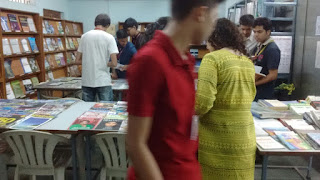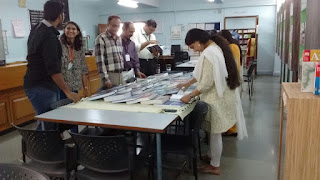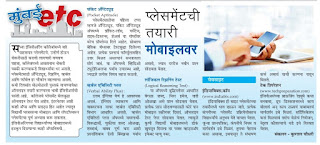Bengaluru: Its almost 4 pm on a Tuesday afternoon
and Vasavi gets ready to take her daily physics lessons for 9th and 10th
graders. An Indian Institute of Technology (IIT)-Madras graduate,
Vasavi, on maternity leave from her corporate job, dedicates three hours
daily to tutoring students from Bengaluru, Delhi, Chennai and remote
towns such as Rudrapur in Uttarakhand.
In Wani taluk, Yavatmal district in Maharashtra, 9th
grader Tanusha M. gets ready for her physics and mathematics class. She
takes two classes from highly qualified teachers whose location Tanusha
does not know. She only knows them through their qualifications and
names.
Vasavi and many others like her are teachers by choice
and Tanusha is one of the thousands of students they teach daily via
Vedantu, an online tutorial service run by Vedantu Innovations Pvt. Ltd.
The journey of Vedantu began almost a decade ago when Vamsi Krishna
from IIT Mumbai), Pulkit Jain, Saurabh Saxena and Anand Prakash (from
IIT Roorkee) got together in 2005 to start something that their parents
did not encourage.
Giving into their parents’ demands, they joined corporate
jobs, but lasted for only about six months. On 16 December 2005, Anand
resigned. The others followed. With a bit of teaching experience gained
during their summer breaks at the IITs, they decided to teach. They
wanted to challenge conventional teaching methods.
They started by teaching the children of the workers at
Trident Group Ltd’s yarn plant at Barnala, Punjab. “That was the pivotal
step,” Vamsi says.
This led to more students and their first venture,
Lakshya, a test prep establishment where they helped students crack
engineering entrance exams. Among the four, they claim to have taught
over 10,000 students from 2006-12 in places such as Patiala and
Chandigarh.
At Barnala they swept floors, set up classes and even
slept at the same place where tuitions were held. “The energy we used to
get from these sessions... we could really see the spark that really
motivated us to take up the profession of teaching,” Vamsi says.
In 2012, Mumbai-based education coaching service provider
MT Educare Ltd acquired Lakshya Forum for Competition Pvt. Ltd. The
model had its limitations. “Being there as teachers ourselves, we felt
the challenges with the offline set-up... no matter what, there were
challenges of scalability.”
Determined, and now equipped with Lakshya’s experience,
they challenged institutionalism and generalisation in education to make
it more personalised and democratic. But the disparity in learning
would remain, which called for a technological intervention.
In April 2014 they started developing a product and six
months later Vedantu was live. Vedantu was the so-called anti-model of
its predecessor. It developed WAVE (whiteboard, audio and video
environment) technology and the teachers marketplace model. In order to
get access to more good teachers, Vedantu started developing
technologies like whiteboard and audio and is currently developing
facial expression reading algorithms for better engagement and greater
efficiency from each session.
“We are coming out with engagement metrics. For every
session the algorithm analyses the session and goes back to the
teacher,” Vamsi says.
Vedantu says, “Innovation has come to facilitate the why.”
Initiatives like Digital India and fast growing Internet
infrastructure provide platforms like Vedantu with tools to connect more
students and teachers facilitating effective learning.
Though the motivation was not money, the company did not
want to be an NGO. The priority was to make a difference; money would
follow. The platform has now completed providing 21,000 hours of live
learning to more than 17,000 students through 180 listed teachers.
The platform, which charges around 30% of the teachers’ fees, says average tutor earns around `40,000 (depending on the number of hours) and the top earner raked in `98,000
(August 2015). Vendantu has a mix of professional teachers, corporate
entities and college students. Vamsi says the presence of teachers
working only on Vedantu (10-15%) is where the real disruption is
happening.
Vedantu is aware of its limitations. This venture cannot
be run as a mainstream institution due to regulatory requirements. “So
we can at least be a parallel education system,” Vamsi says.
Vamsi says that there are around 250 million students in
India and around 33% of them go to private schools. This hasn’t deterred
its global ambitions. “Global expansion can be tempting,” he says about
moving to other markets like in South Korea, Singapore and other East
Asia markets.
Accel and Tiger Global led a $5 million funding in
Vedantu in May this year. Anand Daniel, an early stage investor with
Accel Partners, says Vedantu has huge potential. The tutoring market
size in India is around $11 billion (2014). “Very few teams in India
have a great sense for the education sector as well as how technology
can be used for effective scaling Vedantu is one such team,” he says
Mint has a strategic partnership with Digital Empowerment Foundation, which hosts the mBillionth and Manthan awards.












































